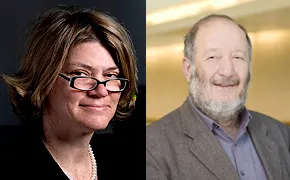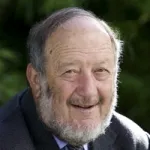
Inside Stanford Medicine - April 28th, 2011 - by Christopher Vaughn
Stanford University’s Faculty Senate today approved the creation of what officials believe is the first PhD program devoted solely to stem cell science in the nation and, perhaps, the world. The new doctoral program in stem cell biology and regenerative medicine is also the first interdisciplinary doctoral program created by the School of Medicine in recent years.
School officials say the fact that the university is taking the rare step of creating a new doctoral program acknowledges the growing importance of stem cell research in the realm of biomedical science. The senate's initial approval of the program extends for five years.
“Stem cell biology is a distinct discipline that requires unique skills and includes a scope of knowledge and a skill set that is not covered by other disciplines,” said Renee Reijo Pera, PhD, professor of obstetrics and gynecology and director of the new PhD program.
Program leaders note that Stanford is among a small number of U.S. universities that have the necessary ingredients to create a doctoral program teaching the full range of stem cell science. They add that although a few other schools have recently established PhD programs involving stem cell biology, Stanford is the first to create a free-standing doctoral program dedicated solely to stem cell biology and regenerative medicine.
In particular, Stanford has received $186 million during the past five years — more than any other institution in the state — from the California Institute for Regenerative Medicine, which was established by state voters in 2004 to advance stem cell research in the face of more-restrictive federal funding policies. The funds have enabled Stanford to build facilities such as the Lorry I. Lokey Stem Cell Research Building (believed to be the largest building in the nation dedicated to stem cell research), to develop educational outreach and tissue banking capabilities, and to recruit a number of renowned researchers and trainees from whom the new PhD students can learn both the science and ethics of human stem cell research.
Philip Pizzo, MD, dean of the School of Medicine, noted that the program will draw on expertise from throughout the university to “prepare tomorrow’s leaders to make fundamental discoveries in how understanding the basic biology of stem cells can impact the study of human biology and disease." The program, he added, will also create new tools and technologies to repair and regenerate cells, organs and tissues.
"It is an exciting and rapidly changing new discipline and one where Stanford can certainly be a leader,” Pizzo said.
CIRM president Alan Trounson, PhD, said the doctoral program “is unique in its interdisciplinary nature and focus on applying discoveries to treat disease. This program, along with CIRM’s training and research support at Stanford, will prepare the next generation of scientists to become leaders in the search for new cures.”
The creation of a doctoral program will also provide a boost to graduate students and accelerate the development of the field itself. “We are establishing an entirely new field that affects both life sciences and medicine,” said Irving Weissman, MD, director of the Stanford Institute for Stem Cell Biology and Regenerative Medicine and professor of pathology. “We are doing this in a time of federal cutbacks of support for graduate students, including those doing life sciences in general and those doing medical science training. The fact that the university is opening this program now allows us to recruit those students whose primary objective is to do stem cell research and stem cell medicine. We believe this will help us establish the new field and accelerate the translation of discoveries into clinical therapies.”
Students themselves played a significant role in the inception of this program. “Incoming students were voicing frustration that the existing PhD programs were outstanding within their narrow disciplines but none provided the cross-disciplinary training required for a successful career in regenerative medicine,” said Theo Palmer, PhD, associate professor of neurosurgery and co-director of the doctoral program. “The new program not only engages subjects taught within the School of Medicine, it crosses the Stanford schools to capture fundamental principles in engineering, law, business and society.”
Reijo Pera added that the inclusion of regenerative medicine emphasizes the doctoral program’s focus on moving basic science findings from the laboratory into the clinic, making it truly “translational” in nature.
Prospective students can begin applying this fall to begin the program in the fall of 2012. The first class will be composed of three to six students, although the program will eventually enroll six students every year, for a program total of 24 students. Students will be required to take prescribed courses, pass a qualifying exam and write a dissertation. One of the distinguishing features of the PhD program is that all students will be required to undergo an immersive clinical rotation in which they will shadow attending surgeons, physicians, residents or fellows.
Reijo Pera said the PhD program in stem cell biology and regenerative medicine will appeal strongly to a new generation of graduate students who are deeply interested in applying their discoveries. “Students used to be content simply studying the basic biological sciences, but a lot of them now want to bring that work forward to address critical clinical needs,” she said. “They are interested in changing the world.”


